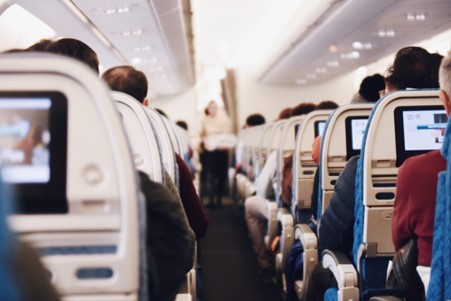
Have you ever had this thought while traveling on a plane that how come those Wi-Fi signals are available at a height of thousands of feet above the ground, allowing you to carry your routine online activities the same as usual? How does the inflight Wi-Fi work at 35,000 feet up in the air? It does seem like a miracle, testifying the rapid advancement in the fields of science and technology. Gone are the days when we would be disconnected from the world existing below our airplane, with no internet access, and our mobile phones asked to be turned off. We are so much dependent on Wi-Fi access these days that we can hardly imagine a couple of minutes without it. With providers offering foolproof wireless networks like RCN WiFi, our expectations for seamless wireless connectivity have risen, even when we are traveling above the ground. Just as we have become accustomed to Wi-Fi access everywhere we go, all hail to public Wi-Fi hotspots, we now also expect them on our air flights while traveling for work or leisure. Many questions arise in our minds the moment we hear that most of the airlines offer in-flight Wi-Fi facilities. How does inflight Wi-Fi work and is it safe to use it? We can create an encrypted connection. Let us delve deeper to know all about it:
Do Airplanes have Wi-Fi?
Yes, airplanes do have Wi-Fi, especially if you are going on a long flight. On shorter flights, it might or may not be available. Generally speaking, the long-distance and domestic US flights almost always offer Wi-Fi. However, European airlines seem to be working to allow more inflight Wi-Fi facilities.
Cost of Wi-Fi on Planes
Some airlines provide free inflight Wi-Fi, including Norwegian Air. However, most airlines might charge you for Wi-Fi usage, such as Monarch or Air Berlin, which have a variety of packages for you to choose from. The inflight Wi-Fi cost charged by these airlines might be quite justified as it is not easy to enable Wi-Fi access on planes. The antenna and equipment might put weight on the plane, so it has to be engineered very smartly.
How Does Inflight Wi-Fi Work?
The main source of Wi-Fi on airplanes is the antenna that serves as the powerhouse. It gathers signals and sends them to the router, which helps in spreading the Wi-Fi signals and distributing them inside the plane. It is always recommended to go through the instructions for the inflight Wi-Fi usage provided to you before taking off. Different companies have their own policies. For instance, some airlines might ask you to switch to flight mode and then connect to the in-flight Wi-Fi, while others might require you to download an app to get online, so it is better to go through the provided instructions by your airline to avoid any confusion.
There are mainly two operating systems responsible for inflight Wi-Fi access including:
Ø Ground-Based Wi-Fi
Ø Satellite Wi-Fi
- Ground-Based Wi-Fi
It works similarly to how our mobile data operates. Airplanes have an antenna lodged in the plane body, which picks up signals from the cell towers in the vicinity. We can say that the airplane behaves like a hotpot and passengers can enjoy normal internet access.
- Satellite Wi-Fi
Satellite Wi-Fi uses a network of satellites to establish a connection. A satellite sends the signals to the ground stations and the plane satellite antenna picks up the signals. The plane catches signals from any satellite that is nearest to it as it continues to travel. This enables passengers to have complete internet access.
The real question is not whether Wi-Fi will be available on airplanes rather it is now about how inflight Wi-Fi is going to get faster and cheaper. As mentioned previously, the intercontinental flights provide an inflight Wi-Fi facility. The number of airlines offering inflight Wi-Fi business is increasing rapidly.
Is Inflight Wi-Fi Safe to Use?
Well, you should not be very casual while connecting to the airplane Wi-Fi. Conversely, you should be cautious, just like you are when connecting to any public Wi-Fi on the ground. The security risks posed by the inflight Wi-Fi might be the same as the ones riding public Wi-Fi on the ground. So, it is always recommended to use a VPN in order to protect your internet connectivity on the plane against any hacker. A VPN can shield your internet connection with an additional layer of encryption and is hard to crack. This can allow you to stay safe while using inflight Wi-Fi access.
The Bottom Line
Internet access on flights is already getting better, faster, more reliable, and smooth. It is advised to make use of a VPN to stay protected during inflight Wi-Fi usage. Let us hope that in the coming years, we might see more and more airlines offering free Wi-Fi. It sure is bliss since the accessibility of the internet on flights does make the journey less boring and more fun.
© 2026 NatureWorldNews.com All rights reserved. Do not reproduce without permission.





